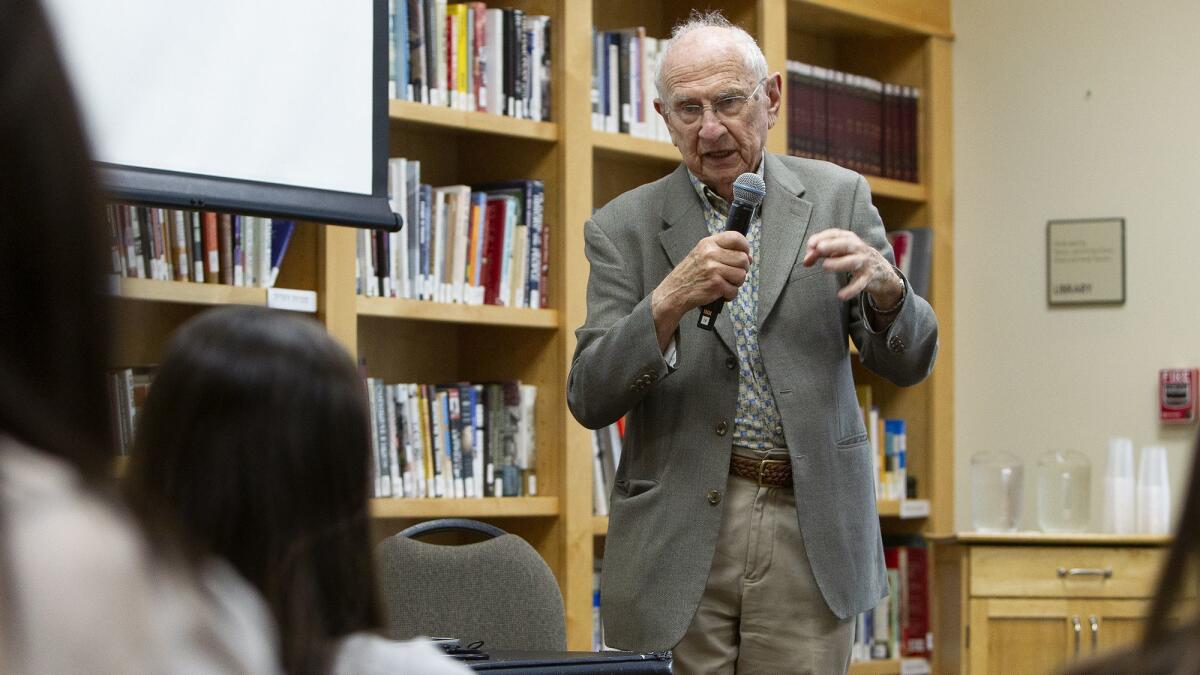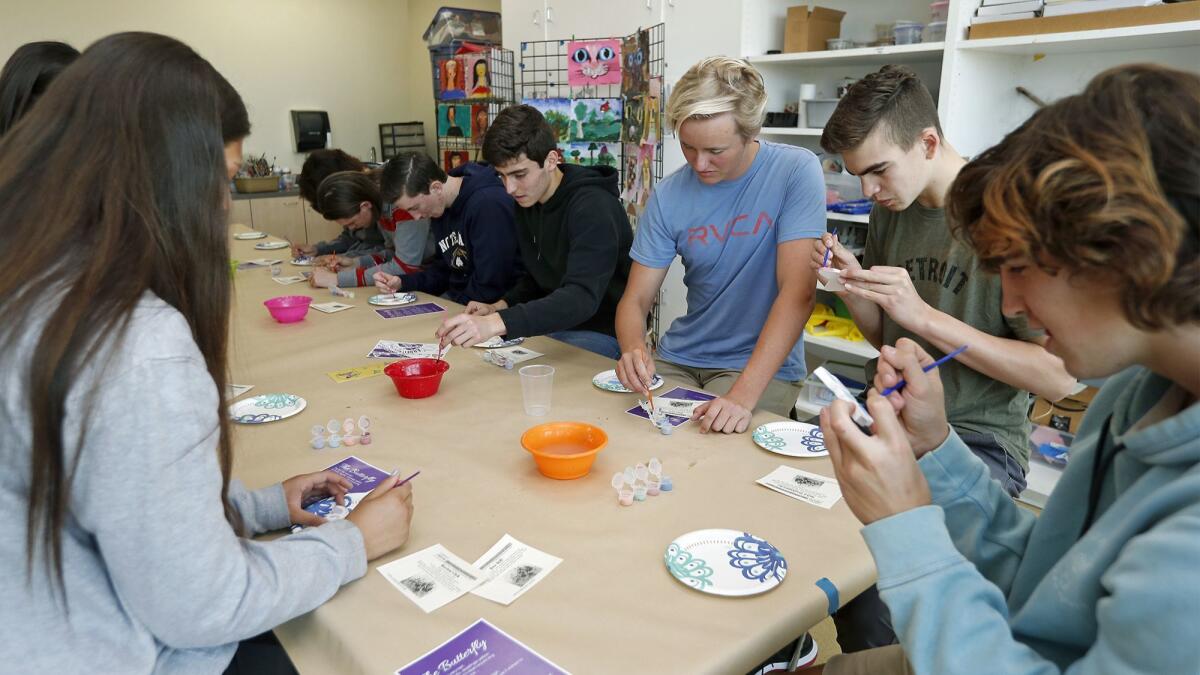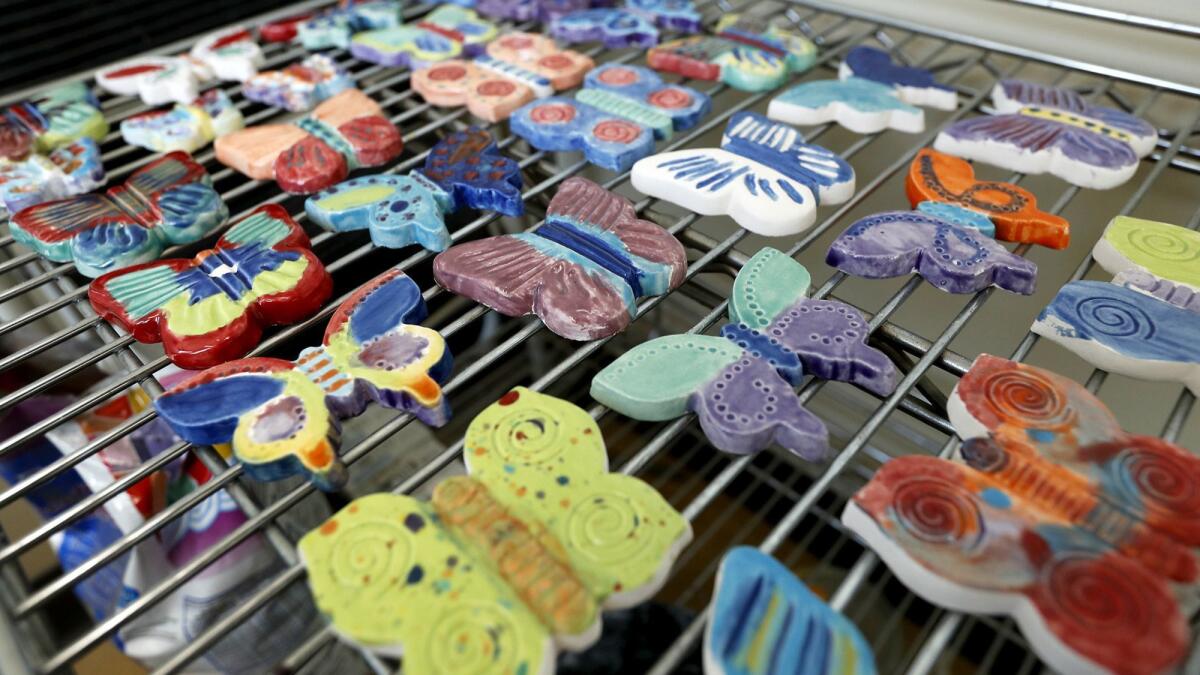Sage Hill students learn about the Holocaust on remembrance day

The Merage Jewish Community Center of Orange County commemorated Holocaust Remembrance Day on Thursday with students from Sage Hill School, who visited the Irvine-based center to learn about the genocide carried out by Nazi Germany during World War II.
Students from the private high school in Newport Coast viewed a documentary about Jack Pariser, a Holocaust survivor who hid with his family until the Allied liberation of Poland in January 1945. They asked Pariser questions about how his family survived and what happened in the aftermath of the Holocaust.
“Any time that you can hear a firsthand account of someone that’s lived through history, it just gives a richness to our understanding,” said Kate Ball, a teacher of modern world history at Sage Hill School. “It adds the element of human nature and the emotion of it.”
The field trip also included viewing an exhibit of artwork and writings by children who were held at the Terezin camp in what is now the Czech Republic. Char Williams-Cavitt, the center’s director of marketing, said the Nazis set up the camp “in an effort to fool Western Allies and organizations like the Red Cross to portray that this camp was filled with rich culture, arts and music. They looked at it as a way to try to dispel rumors of extermination camps.”
Debbie Meline, director of the community center’s Center for Jewish Life, led the field trip and discussed the recent Poway synagogue shooting and the March incident in Costa Mesa in which students from local high schools were photographed doing Nazi salutes over a beer-pong swastika.
Meline said it is important for students to learn the details of the Holocaust “because when they learn about 6 million Jews [killed], it’s such a big number that it can almost become trivial and it can become this anonymous footnote to history.”

“We want [students] to connect with the idea that every single individual was a real person with a whole life,” Meline said. “We’re trying to get them to realize there were teenagers, there were children … they were individuals with lives very similar to theirs until the Holocaust happened.”
Riley Amadore, a Sage Hill sophomore, said she knew “just anything we learned in school” about the Holocaust but that she hadn’t heard many personal stories.
“It was great to hear a firsthand account, and I don’t think we hear as much about the people who didn’t go to concentration camps and the people who went into hiding other than Anne Frank,” Riley said. “It was really interesting to hear about that.”
She added that it was “shocking in a way” and that she felt sad but was glad to know the Parisers survived and to hear of the people who helped them.
The students also were invited to take part in the Butterfly Project, in which participants paint a ceramic butterfly to honor the 1.5 million children lost to the Holocaust and to honor its survivors.
When completed, the butterflies made at the Merage Jewish Community Center will be mounted on the walls surrounding the center’s Nancy & Irving Chase Family Holocaust Memorial Garden.

Students read aloud the names of the children they were painting for, using cards provided by the Butterfly Project.
“Those kids had no say in anything. They just had no choice. It was absolutely terrible,” said sophomore Jake Lopez.
“I think it’s great that we’re coming together as a community to support the Jews,” he added. “There’s a lot of anti-Semitic things going on and I feel that the Butterfly Project really just shows there is support for them.”
Holocaust Remembrance Day also is known by the Hebrew name Yom Hazikaron laShoah ve-laG’vurah. It is more commonly known as Yom Hashoah by the Jewish community internationally. It translates to Holocaust Martyrs’ and Heroism Remembrance Day, according to Julie Holdaway, assistant executive director at the Merage center.
It is different from International Holocaust Remembrance Day, which is recognized by the United Nations and coincides with the anniversary of the liberation of the Auschwitz-Birkenau concentration camp on Jan. 27, 1945.
“I really don’t believe that it matters whether you teach [about] the Holocaust or not, but it matters that you teach good humanity,” Pariser said. “I think it’s an avenue or a means of teaching good humanity. ...
“I don’t see a relationship between knowing about the past and good behavior. You want to teach good behavior? Teach good behavior. That’s my philosophy.”
Support our coverage by becoming a digital subscriber.
All the latest on Orange County from Orange County.
Get our free TimesOC newsletter.
You may occasionally receive promotional content from the Daily Pilot.




